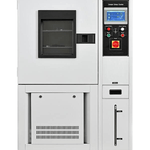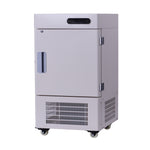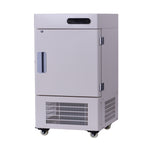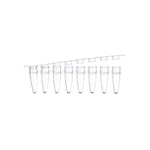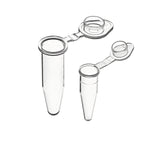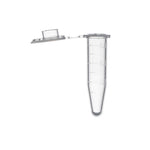You have no items in your shopping cart.

Laboratory centrifuges are scientific apparatus that centripetally swirls liquid or gas substances at high speeds using a motor. They are, however, classified into several varieties based on their size and sample capacity. All centrifuges operate on the deposition principle, in which the centripetal force used separates materials of higher and lower densities.
A huge force is generated when the motor rotates, causing heavier components in the liquid to move outwards from the radial direction, whereas less heavy components flow to the center. Laboratory centrifuges are normally used in scientific and health facilities to purify cells, organelles, viruses, proteins, and nucleic acids.
Still, there are various tests that require serum or plasma in the clinical environment, and these components can be set apart from whole blood by centripetal disposition. For instance, whole blood samples are allowed to clot at 20 °C, which yields a serum. However, the sample is further taken into a centrifuge to eliminate the clot. This process leaves a pure serum behind.
How does a Laboratory Centrifuge operate?
Centrifuges do not only separate two materials with different densities, but they also separate substances with similar densities or insoluble particles in a suspension. A widespread misunderstanding about centrifuges is that they produce centrifugal force.
In reality, there’s centripetal acceleration in play as caused by the motor. But the basic principle is sedimentation. Rotor movement generates centripetal force, which in turn acts on both the rotor and the centrifuge ducts. The denser part of the liquid in the spin column is pushed outward in the radial direction, and the lighter particles get pulled to the center.
Centrifuge Rotor Types
While there are several types of rotors, the fixed angle rotor and swinging bucket are the ones that are used in nearly all centrifuges. The fixed angle maintains the tubes at a fixed angle in line with the vertical rotational axis (45°), allowing the sediment to remain in the centrifugal column's side and bottom.
On the other hand, the swinging bucket rotor causes the tubes to extend out but from a vertical resting state. It is therefore placed parallel to the horizontal. As such, the sediment will accumulate in the centrifugal tube’s base.
Fixed-angle blades are good for pelleting operations. They are convenient for extracting microparticles from a solution. On the other hand, a swinging bucket rotor comes in handy when separating high volume loads at moderate speeds and when you have to extract more than one sample based on density.
What are the common types of laboratory centrifuges?
Microcentrifuge
Microcentrifuges are designed to be compact and primarily used for tiny ducts ranging from 0.2 mL to 2.0 mL. Despite that, there are still other micro centrifuges that use a variety of rotors that can be readily exchanged to fit tubes of varying sizes. Due to their size, they take little room on the workbench. A microcentrifuge can be used in the microfiltration of liquid samples. It’s still helpful in pelleting nucleic acid protein from mixtures.
Refrigerated Centrifuges
The refrigerated centrifuges are designed for materials that demand a stable temperature of °C. It is consequently critical that these centrifuges operate at top speeds without changing the temperature. Temperatures in refrigerated centrifuges will range from –20 to –40 degrees Celsius. The range renders them perfect for DNA, RNA, or antibody evaluation.
Refrigerated centrifuges may also reach speeds of more than 30,000 rotations per second and have a corresponding centrifugal intensity of more than 65,000 x g. They are available in either swing bucket or fixed angle configurations, and some have both.
Microcentrifuges (microfuges) are suitable for micro samples (2ml). They have variable speeds, which depend on the number of tubes they can hold in a given time.
On the other hand, refrigerated centrifuges with greater holding capacity may allow some margin for rotor chamber replacement with variable sizes. They have a rated limit of 65,000g and are commonly used for rapidly settling samples, such as erythrocytes.
Ultracentrifuges
Like other types of centrifuges, an ultracentrifuge is tuned for extremely fast revolutions. Owing to this, their acceleration can go up to 1,000,000 g or approximately 9,800 km/s². They allow the operator to leverage the microscopic distinctions between components such as polypeptides and nucleotides to separate them
Analytical Ultracentrifuge
The analytical ultracentrifuge is different because it has a scanning visible light-based optical detecting device for real-time observation of samples while in spinning mode. It allows users to observe the sedimentation cycle. Furthermore, they have a capacity of 500,000 g, and the system's scanners consist of a system for absorbing light, a Schlieren system, and a Rayleigh interferometer system.
Care and upkeep of centrifuges
A few easy procedures can keep a centrifuge in good working order and decrease the danger of damage or harm.
1. The O-rings are still the primary source of leakage prevention and should be oiled before installing a replacement rotor or after washing. All threaded parts must be washed regularly and greased with a specified lubricant to guarantee optimal performance and avoid cross-threading or rusting.
2. Ensure that you understand how to use a centrifuge correctly. This implies that you must place the buckets correctly on their pins, balance the tubes within the rotor, and run the rotors within the specified speed and max chamber mass restrictions.
3. Examine important components for traces of deterioration, such as abrasion or the impact of exposure of chemicals on the rotors.
4. Pay great attention to any sounds, vibrations, rattling, or crunching, and turn off the device if there's any unusual noise.
5. Cleaning your centrifuge should be done using an alcohol disinfectant and applied on the rotors and attachments using a clean piece of towel. Also, on the inside, the rotor chamber and panels with electrical components, including touchscreens and dials, must be cleaned daily.
check out our blog post on detailed centrifuge maintenance guide!
Summary:
In summary, a laboratory centrifuge is an apparatus used to separate fluids, either gas or liquid, depending on their densities. Segregation is accomplished by rapidly rotating a vessel holding the content to be separated; angular momentum forces heavier elements to the exterior of the centrifuge. The device commonly purifies viruses, proteins, and DNA cells, and you can spot it in laboratories. Centrifuges are categorized into several categories based on their intended function or rotor design, as aforementioned.


